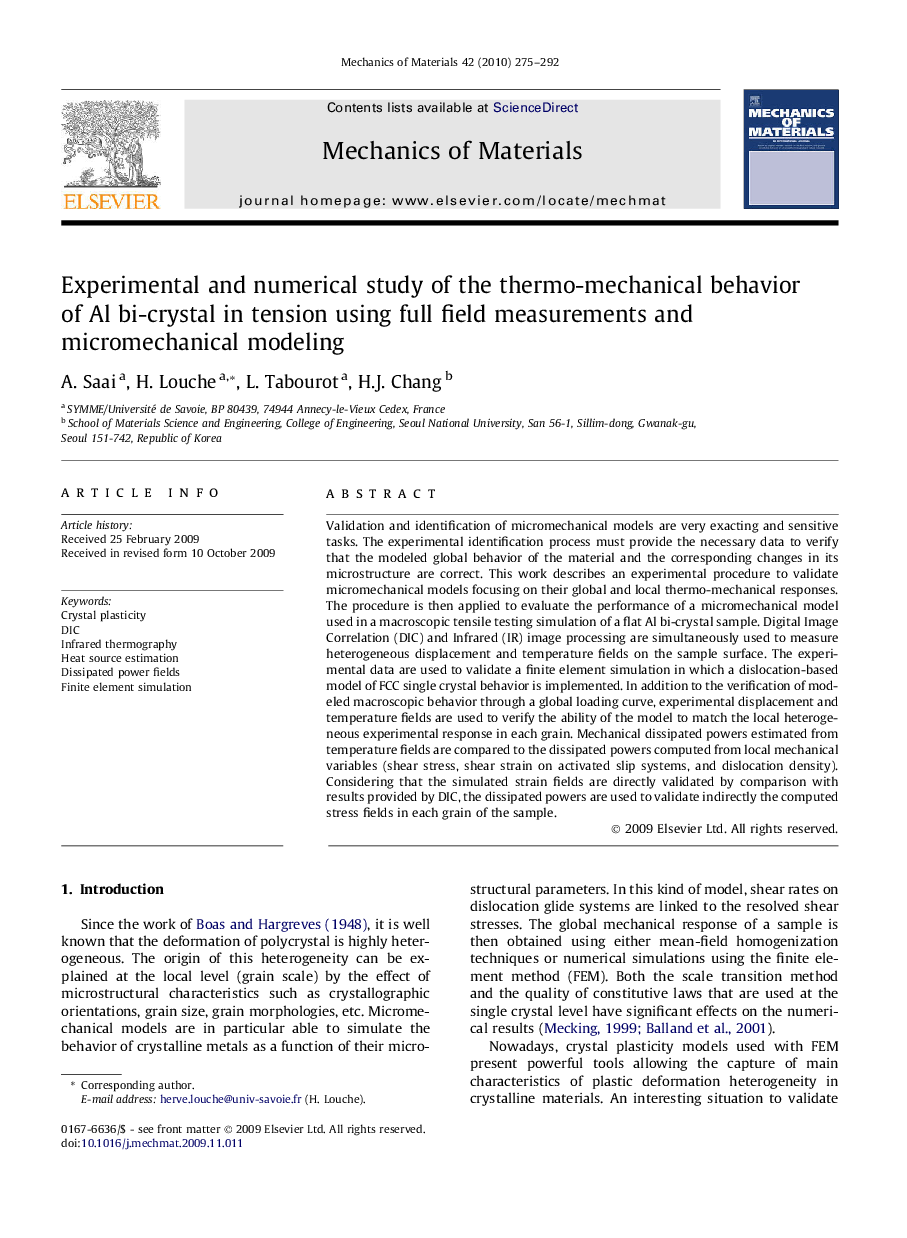| Article ID | Journal | Published Year | Pages | File Type |
|---|---|---|---|---|
| 800028 | Mechanics of Materials | 2010 | 18 Pages |
Validation and identification of micromechanical models are very exacting and sensitive tasks. The experimental identification process must provide the necessary data to verify that the modeled global behavior of the material and the corresponding changes in its microstructure are correct. This work describes an experimental procedure to validate micromechanical models focusing on their global and local thermo-mechanical responses. The procedure is then applied to evaluate the performance of a micromechanical model used in a macroscopic tensile testing simulation of a flat Al bi-crystal sample. Digital Image Correlation (DIC) and Infrared (IR) image processing are simultaneously used to measure heterogeneous displacement and temperature fields on the sample surface. The experimental data are used to validate a finite element simulation in which a dislocation-based model of FCC single crystal behavior is implemented. In addition to the verification of modeled macroscopic behavior through a global loading curve, experimental displacement and temperature fields are used to verify the ability of the model to match the local heterogeneous experimental response in each grain. Mechanical dissipated powers estimated from temperature fields are compared to the dissipated powers computed from local mechanical variables (shear stress, shear strain on activated slip systems, and dislocation density). Considering that the simulated strain fields are directly validated by comparison with results provided by DIC, the dissipated powers are used to validate indirectly the computed stress fields in each grain of the sample.
